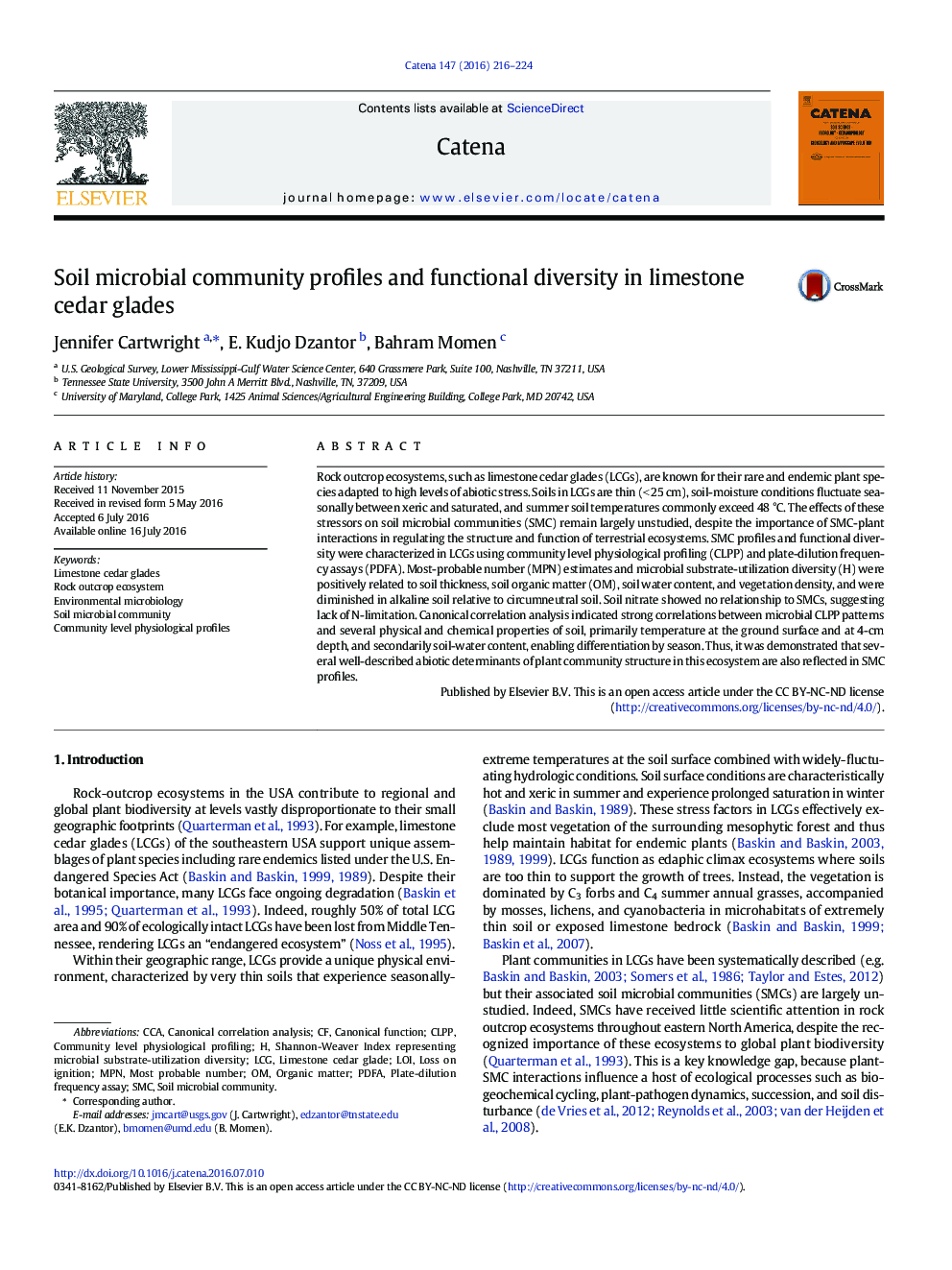| Article ID | Journal | Published Year | Pages | File Type |
|---|---|---|---|---|
| 6407711 | CATENA | 2016 | 9 Pages |
â¢Soil microbial communities were studied in an edaphically-stressful ecosystemâ¢Seasonal extremes in soil moisture and temperature were observedâ¢MPN and H were related to soil thickness, moisture, OM, pH, and vegetationâ¢CLPP patterns were strongly correlated with soil temperature, moisture, and OM
Rock outcrop ecosystems, such as limestone cedar glades (LCGs), are known for their rare and endemic plant species adapted to high levels of abiotic stress. Soils in LCGs are thin (< 25 cm), soil-moisture conditions fluctuate seasonally between xeric and saturated, and summer soil temperatures commonly exceed 48 °C. The effects of these stressors on soil microbial communities (SMC) remain largely unstudied, despite the importance of SMC-plant interactions in regulating the structure and function of terrestrial ecosystems. SMC profiles and functional diversity were characterized in LCGs using community level physiological profiling (CLPP) and plate-dilution frequency assays (PDFA). Most-probable number (MPN) estimates and microbial substrate-utilization diversity (H) were positively related to soil thickness, soil organic matter (OM), soil water content, and vegetation density, and were diminished in alkaline soil relative to circumneutral soil. Soil nitrate showed no relationship to SMCs, suggesting lack of N-limitation. Canonical correlation analysis indicated strong correlations between microbial CLPP patterns and several physical and chemical properties of soil, primarily temperature at the ground surface and at 4-cm depth, and secondarily soil-water content, enabling differentiation by season. Thus, it was demonstrated that several well-described abiotic determinants of plant community structure in this ecosystem are also reflected in SMC profiles.
